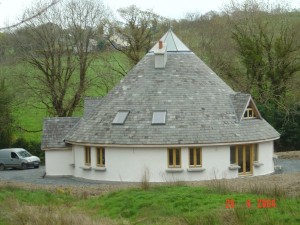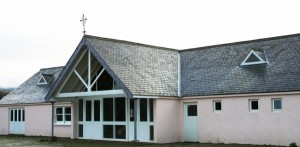Sorry we are currently closed
Technical Support
Natural slate or tile roofs are sometimes complicated so customers seek our Technical advice. With over 30 years experience of pitched roofing, there are few problems for which we cannot find a solution. We understand the attributes and performance characteristics of all types of slates and tiles whether natural or man-made.
 Roof shapes also differ. Cones, Hexagons, Curves, Close-mitres, Swept valleys, Unequal pitches, Coursing in, Parapet gutters, change of pitch, Sprocketing etc arise sooner or later.
Roof shapes also differ. Cones, Hexagons, Curves, Close-mitres, Swept valleys, Unequal pitches, Coursing in, Parapet gutters, change of pitch, Sprocketing etc arise sooner or later.
Frequently asked questions such as Batten dimensions, Recommended nails, Ventilation, Insulation, Vent extracts, Soil stacks, Lead codes, Roof windows, Stain removal, replacing slates and Types of felt or membrane crop up on a daily basis.
Technical knowledge and experience faces the ACID test when confronted with the restoration of slate roofs on LISTED buildings such as Castles, Churches, Courthouses and other Public Buildings.
 Our Staff will identify the existing slate, and supply slates either New or Second-hand with ridges to match.They will also advise on the construction to provide for increased Insulation while avoiding harmful condensation – all in compliance with current Building Regulations.
Our Staff will identify the existing slate, and supply slates either New or Second-hand with ridges to match.They will also advise on the construction to provide for increased Insulation while avoiding harmful condensation – all in compliance with current Building Regulations.
Improving the performance of low pitched slate roofs:
We are regularly asked ” What is the lowest pitch at which I can slate a roof “. The answer depends on a number of factors such as height, rafter length, site location, slate or tile being used etc. In general terms the minimum pitch is 22.5 degrees but we have seen pitched roofs perform down to 15 degrees pitch. Each roof has to be assessed individually.
A number of companies provide solutions such as GRACE ICE & WATERSHIELD Self-adhered roofing underlayment
http://www.graceathome.com/pages/downloads/giws-060p.pdf
We must emphasise that roofs slated BELOW the recommended minimum pitch are less than perfect. Performance can be increased by improving the construction of the sub-roof with specialist materials.
Tyvek Breather Membranes in Pitched roofing:
Based on our experience of Breather Membranes over the past 25 years, we firmly believe that TYVEK products give outstanding long-term performance.
We strongly recommend Tyvek construction materials and in particular Tyvek Supro + breather membrane http://construction.tyvek.co.uk
used in conjunction with Tyvek SD2 Vapour Control / Air Leakage Barrier.
We also recommend that all pitched roofs should be counter battened to allow unobstructed AIR FLOW from eaves to ridge especially where roofs have dormers and hips.
Historically pitched roofs along the Atlantic coasts of Scandanavia, Scotland and Ireland were close boarded to improve wind-resistance especially in open attic situations.Traditionally timber boards were 6″ or 8″ wide by 1 ” thick. In recent years some Roofers are using 8×4 sheets of high performance preservative treated plywood or similar sheeting. We also recommend that all timber used in the construction, including rafters, should be treated with wood preservative.
Ask a Question .....
If you have any queries or questions, ask John about any of our roofing products.
